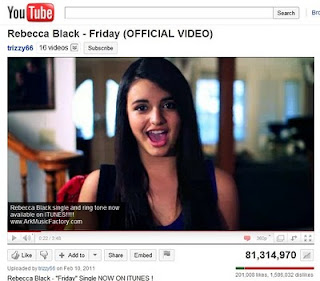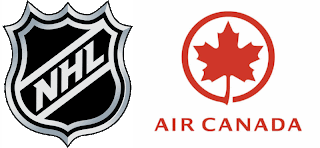McGill University got hammered with a $2-million fine by the Quebec government. The "crime": raising its tuition for an MBA – from $1,700 to $29,500. Premier Jean Charest's Education Minister Line Beauchamp argued that keeping universities on equal financial footing is crucial to making them accessible to all.
There are many reasons why the overall government decision is wrong. We could list them alphabetically, chronologically, by order of importance... A few of the reasons are presented in McGill University's press release below, but before I reproduce that, I am going to say a few words on McGill University and branding.
McGill University is THE crown jewel of Canadian university brands. It's the brand that gets a proud Canadian shout-out by William Shatner at the closing ceremonies of the Vancouver Olympics; it is the emblem that the Canadian men's hockey coach insists on wearing during the gold medal game at the Olympics; it is the name that appears in international photos in the New York Times; and it is the brand that gets knocked -along with Ivy league schools- on the Simpson's. The school is anything but just another university. Its notable alumni include nine Nobel Laureates, one hundred thirty-one Rhodes Scholars, three astronauts, two Canadian prime ministers, four justices of the Canadian Supreme Court, three foreign leaders, nine Academy Award winners, three Pulitzer Prize winners, and twenty-eight Olympic medalists (Wikipedia). In management, Henry Mintzberg is easily considered one of the world's best management minds. Who wouldn't want to study at such a school?

But let's get back to the McGill MBA program and its economic realities. Currently, the cost of educating an MBA student is about $10,000 more than the combined revenues from government grants and tuition fees.

Take a class of 100 students and that is a $1,000,000 funding shortage per year. So how can the McGill MBA (at the Desautels Faculty of Management) maintain a competitive brand with its natural international competitive set (London Business School, Insead, HEC Paris, etc) when it is financially disadvantaged relative to its privately funded counterparts? Dollars mean better profs, better facilities and better marketing to attract the best students. Private tuition means more accountability to the students. Collectively, these help to build the MBA school's brand. If governments are unwilling to crank up education funding rates to a competitive level so the brand can be supported, an injection of funds through privatization is a necessary option. Furthermore, an MBA is the natural degree to privatize. Why? Most MBA students are already in management positions and, by nature of what they study, they realize the fundamental concept "Value = Benefits - Cost" more than students from other disciplines. Paying $30 k per year for 2 years to get a pay hike of $30 k immediately on graduation happens all the time in business. This doesn't happen in art history, theology or psychology.
Here is a glimpse of the MBA mindset from
MBA360: "
The average cost for an MBA is between $80,000 and $130,000 for the two-year course. With MBA courses the more you pay, the greater the benefit. The more prestigious the school, the more expensive the tuition. This is one area where the brand name, or the name of the academic institution that you choose, will definitely make a difference, both in the type of education you receive and how potential employers perceive your degree."
If this is the mindset of an MBA student, then the McGill MBA program price hike may not even be enough to support where brand McGill MBA is - or is going. The applying students and the firms hiring from McGill will ultimately make that call. But McGill "gets" this. Applying students understand this. The provincial government doesn't. Ironically, Jean Charest was the one who said, "In politics, common sense prevails, but it is usually the last option." Well Jean, my friend, on that you are right.
FOR IMMEDIATE RELEASE
Tuesday, March 15, 2011
McGill disappointed by government’s response on MBAProgram has made remarkable progress since self-funding model adoptedMcGill University is perplexed and disappointed with the response of the Government of Quebec to the changes made by McGill to transform the University’s MBA program.
Rather than celebrate the dramatic progress and success McGill has achieved in a short period of time with its renewed and self-funded MBA, the government has imposed a significant fine against one of its own universities.
This action puts an arbitrary, elective and unprecedented exercise of authority of government as a priority over demonstrated quality and program performance.
Since McGill moved to a self-funded program, it has developed an MBA that is attracting top-calibre students from Quebec (some of whom would have otherwise gone outside the province for their MBA), and from elsewhere.
The McGill MBA’s improvements include: leaping from 95th to 57th in the prestigious Financial Times rankings; maintaining stable enrolment rates; having McGill graduates enjoy the highest job placement rates and highest starting salaries in Canada; being ranked by FT as the only Quebec MBA program in the Top 100 in the world.
To sustain the University’s increased investments in its program, McGill moved last fall to a self-funded tuition model under which it does without any government subsidies for its MBA students, thus saving Quebec taxpayers about $1.2 million annually.
McGill has created, at the same time, student aid at a unique level of support for any Quebec university program, on a per-student basis. The McGill MBA program provides an average of $12,000 per student in financial aid.
Quebecers deserve better than to have a top quality program fined. Quebecers deserve a world-class MBA program and McGill is providing it. McGill has demonstrated that it can do so without limiting accessibility, and without doing so on the backs of our undergraduate students.
McGill’s rejuvenated program, now with better facilities, improved student-teacher ratios, top-level professors, improved advising and novel educational elements, costs significantly less than top MBA programs elsewhere in Canada, and the world.
McGill will continue to meet the interests of our students, and of Quebec.





















